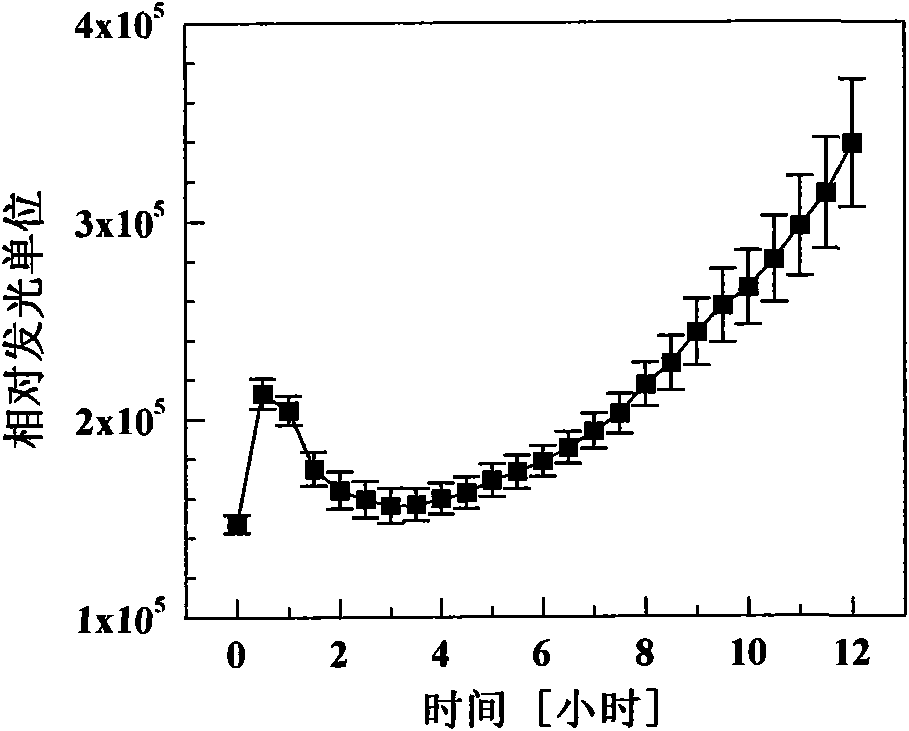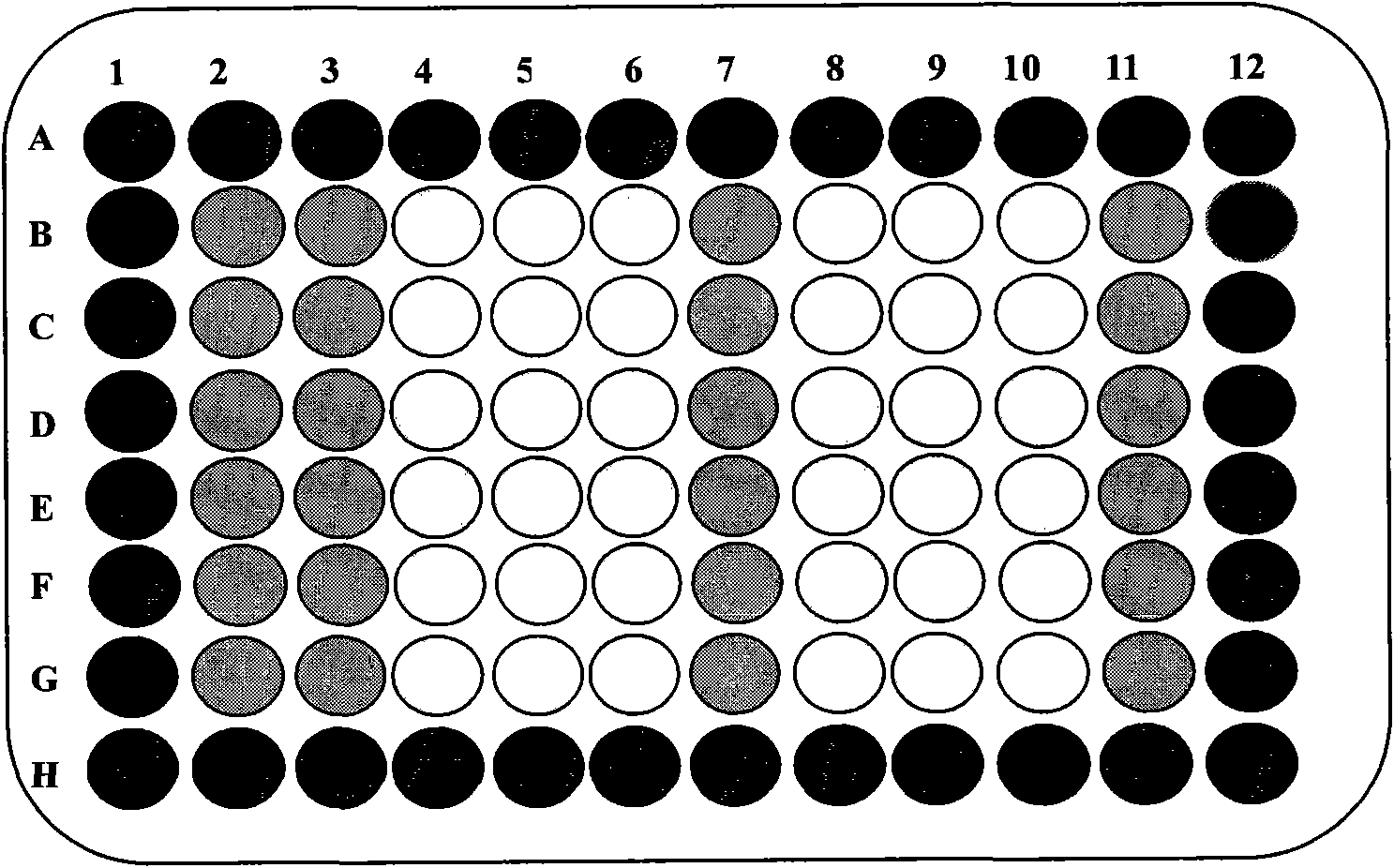Vibrio qinghaiensis Q67 based long-term microplate toxicity analyzing method of environmental pollutant
A technology for environmental pollutants, Vibrio qinghai, applied in biochemical equipment and methods, analysis by chemical reaction of materials, and determination/inspection of microorganisms, which can solve the problems of long action time and low concentration of emerging pollutants.
- Summary
- Abstract
- Description
- Claims
- Application Information
AI Technical Summary
Problems solved by technology
Method used
Image
Examples
Embodiment 1
[0045] [Example 1] Carry out Wilbur's long-term toxicity assay with the toxicity analysis method of the present invention, comprising the following steps:
[0046] (1) Preparation and cultivation of Qinghai Vibrio Q67 common medium:
[0047] Weigh KH separately 2 PO 4 27.2 mg, Na 2 HPO 4 12H 2 O 71.6 mg, MgSO 4 ·7H 2 O 0.5g, MgCl 2 ·6H 2 O 1.22g, CaCl 2 66.0 mg, NaHCO 3 2.68g, NaCl 3.08g, yeast extract 5.0g, tryptone 5.0g, glycerin 3.0g, heated and dissolved in 1000mL distilled water, adjusted the pH value to 8.5±0.5 with 1mol / L NaOH, and sterilized at 121°C according to conventional sterilization Sterilize under high pressure steam for 20 minutes and use after cooling. All of the above media were purchased from Shanghai Sinopharm Chemical Reagent Co., Ltd.
[0048] (2) Preparation of the solid plate culture medium of Vibrio Qinghai Q67:
[0049] Take 100mL of ordinary culture medium obtained in step (1), add 1.5-2.0g of agar, heat to dissolve until transparent...
Embodiment 2
[0069] [Example 2] Carry out the long-term toxicity determination of Promilone with the toxicity analysis method of the present invention
[0070] The remaining steps of the method are the same as in Example 1, except that the volume ratio in step (5) is 1:5, and the relative luminous intensity of the 100 μL microplate-loaded bacterial solution is 0.8×10 5 Relative luminescent unit; the highest inhibition rate reaches more than 80% in step (6), and the concentration of the sample stock solution is 2.22 × 10 -3 mol / L, dilution factor The raw data of Q67 luminescence intensity were measured according to the above method steps, and the concentration-effect data were obtained as shown in Table 2 after entering the preprocessing according to step (8). Select the Weibull function in the APTox software (software number 062731, registration number 2006SR15065) to carry out nonlinear least squares fitting to the concentration-effect data, obtain fitting parameters α=7.47, β=2.56, and...
Embodiment 3
[0073] [Example 3] Carrying out the long-term toxicity determination of mecitrione with the toxicity analysis method of the present invention
[0074] The remaining steps of the method are the same as in Example 1, except that the volume ratio in step (5) is 1:3, and the relative luminous intensity of the 100 μL microplate-loaded bacterial solution is 1.2×10 5 Relative luminescence unit; in step (6), the concentration of the sample stock solution is 3.56×10 -3 mol / L, dilution factor
[0075] The raw data of Q67 luminescence intensity were measured according to the steps of the above method, and the concentration-effect data were obtained by preprocessing according to step (8), as shown in Table 3. Select the Logit function in the APTox software (software number 062731, registration number 2006SR15065) to carry out nonlinear least squares fitting to the concentration-effect data, obtain fitting parameters α=9.09, β=2.92, and the square of the correlation coefficient is 0.968...
PUM
 Login to View More
Login to View More Abstract
Description
Claims
Application Information
 Login to View More
Login to View More - R&D
- Intellectual Property
- Life Sciences
- Materials
- Tech Scout
- Unparalleled Data Quality
- Higher Quality Content
- 60% Fewer Hallucinations
Browse by: Latest US Patents, China's latest patents, Technical Efficacy Thesaurus, Application Domain, Technology Topic, Popular Technical Reports.
© 2025 PatSnap. All rights reserved.Legal|Privacy policy|Modern Slavery Act Transparency Statement|Sitemap|About US| Contact US: help@patsnap.com



